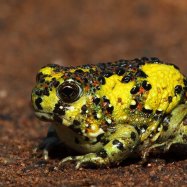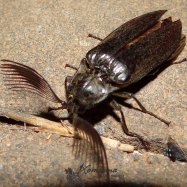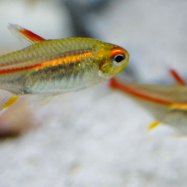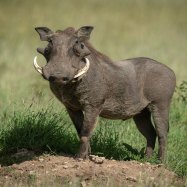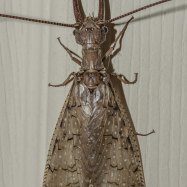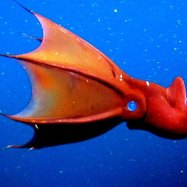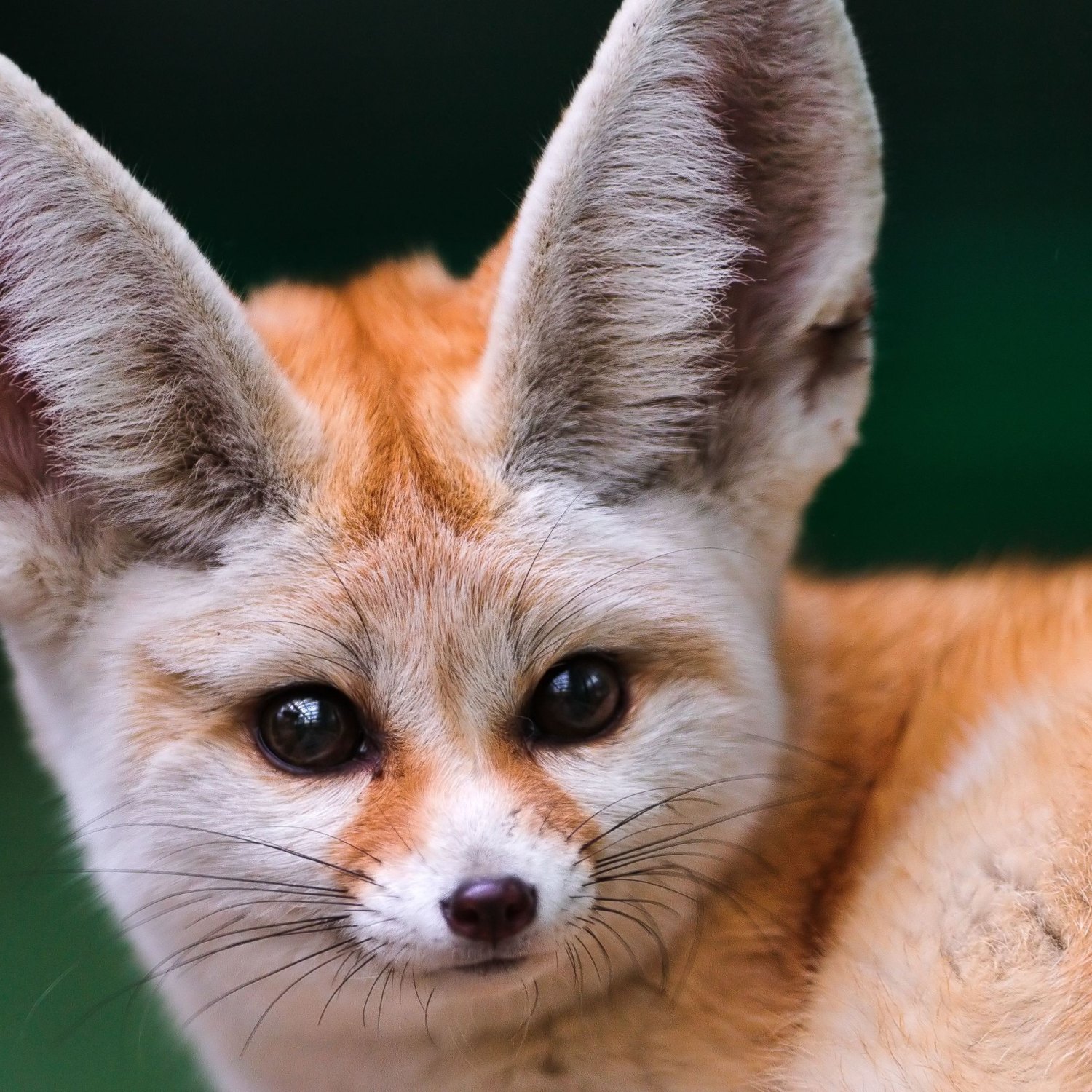
Fennec Fox
14 to 16 inches
The adorable Fennec Fox is the smallest fox in the world, measuring only 14-16 inches in length. They can be found in North Africa and belong to the Canidae family. With their small and slender body shape, these foxes are expert diggers and have oversized ears to help regulate their body temperature. #FennecFox #NorthAfrica #Canidae
Animal Details Summary:
Common Name: Fennec Fox
Kingdom: Animalia
Habitat: Desert
The Adorable Fennec Fox: A Desert Dweller with Unique Adaptations
There are many animals that are considered icons of the desert, but none are quite as captivating as the Fennec Fox. With its oversized ears and petite body, this creature has captured the hearts of people all around the world. But there is more to the Fennec Fox than its endearing appearance. In this article, we will explore the fascinating features of this species, from its scientific classification to its adaption to life in the harsh desert environment Fennec Fox.The Scientific Classification of the Fennec Fox
Before we dive into the unique characteristics of the Fennec Fox, let’s first understand its scientific classification. The Fennec Fox belongs to the Animalia kingdom, which encompasses all living organisms. Within this kingdom, it falls under the Chordata phylum, which includes all animals with a spinal cord.Next, the Fennec Fox belongs to the Mammalia class, which comprises animals that have hair or fur, produce milk to nourish their young, and have specialized teeth for chewing. Within the Mammalia class, the Fennec Fox belongs to the Carnivora order, which includes animals that primarily eat meat.
Finally, the Fennec Fox belongs to the Canidae family, which includes dogs, wolves, and other fox species. Interestingly, the Fennec Fox is the smallest member of the Canidae family, making it quite unique among its relatives.
A Habitat Fit for a Desert Lover
The Fennec Fox is a master at adapting to its environment, and it has chosen a very distinct one to call home – the desert. Found mostly in the Sahara desert and other parts of North Africa, this species has evolved to thrive in the hot and dry conditions of the desert Fox Squirrel.The desert may seem like an inhospitable place for most animals, but the Fennec Fox has many adaptations that help it survive in this harsh environment. One of its most distinctive features is its oversized ears. Measuring at about 6 inches in length, these ears not only make the Fennec Fox look incredibly cute, but they also serve a purpose. The large ears help the Fennec Fox dissipate heat and keep its body cool in the scorching desert sun.
Additionally, the Fennec Fox has thick fur that acts as insulation, keeping it warm at night when temperatures drop significantly in the desert. This fur also has a sand-colored hue, which helps it blend in with its surroundings, making it harder for predators to spot.
A Sleek and Slender Body
One look at the Fennec Fox, and you’ll notice its petite and slender body. Measuring at a length of 14-16 inches and weighing only 2-3.5 pounds, this species is the smallest fox in the world. Its small size and lightweight frame make it an incredibly agile and fast runner.This body shape also helps the Fennec Fox conserve energy, a crucial aspect of survival in the desert. With limited resources, the Fennec Fox needs to be able to move efficiently to hunt for prey and avoid predators.
An Omnivorous Diet
Despite being classified as a carnivore, the Fennec Fox has a diverse and flexible diet. In the wild, it primarily feeds on insects, small rodents, and birds, making it an opportunistic hunter. However, it is also known to supplement its diet with fruits, berries, and eggs.This flexibility in diet allows the Fennec Fox to adapt to changing food availability in the desert. During the dry season when food is scarce, the Fennec Fox can survive on a mostly plant-based diet. But when resources are abundant, it will not hesitate to hunt for prey.
A Wide Geographical Distribution
The Fennec Fox is not just limited to the Sahara desert. It can also be found in parts of Egypt, Sudan, and other countries in North Africa. One interesting fact about this species is that it is the national animal of the country of Algeria.Its wide distribution is evidence of the Fennec Fox’s ability to adapt to different desert ecosystems. From the rocky terrain of the Sahara desert to the sandy dunes of Egypt, this species has proven that it can thrive in various environments.
A Closer Look at the Fennec Fox
To truly appreciate the beauty and uniqueness of the Fennec Fox, let’s take a closer look at its physical features. As mentioned earlier, its most prominent feature is its oversized ears, which have a cute, fluffy appearance. These ears are not only functional but also serve as a way for the Fennec Fox to communicate with others of its kind.Its body is designed for stealth and quick movements, with a long tail that helps it maintain balance while running and jumping. Its fur is soft and dense, with a pale yellow to sandy or reddish-tan coloration, perfect for blending in with the desert landscape.
The Fennec Fox also has a pointed snout, sharp teeth, and keen senses that are vital for hunting. Its large, dark eyes have excellent eyesight, enabling it to spot prey from long distances. Meanwhile, its sense of smell is so acute that it can detect prey even underground.
The Human-Fennec Fox Connection
Throughout history, humans have been fascinated by the Fennec Fox. Its unique appearance and behavior have captured the attention and admiration of many. In North African folklore, the Fennec Fox is often portrayed as a wise and cunning creature, capable of outsmarting its predators.In recent years, it has also gained popularity as an exotic pet. However, it is worth noting that the Fennec Fox is a wild animal and does not make a suitable pet for everyone. As with any wild animal, it requires specialized care and ample space to thrive, making it unsuitable for the average pet owner.
Conservation Status and Threats
Unfortunately, like many species, the Fennec Fox is facing numerous threats to its survival. Habitat loss due to human activities, such as urbanization and desert farming, is a significant concern for this species. Additionally, the Fennec Fox is sometimes hunted for its fur or captured for the exotic pet trade.Conservation efforts are being made to protect the Fennec Fox and other animals that call the desert their home. These efforts include creating protected areas and educating local communities on the importance of preserving the species and its habitat.
In Conclusion
In a world where animals are continuously facing threats to their survival, the Fennec Fox stands out as a symbol of resilience. From its unique adaptations to its charming appearance, this species has captured our hearts and continues to fascinate us with its survival skills in the harsh desert environment.As humans, it is our responsibility to ensure that the Fennec Fox and other animals are protected and have a future in our world. By understanding and appreciating these creatures, we can take the necessary steps towards their conservation and the preservation of our planet's diverse wildlife.

Fennec Fox
Animal Details Fennec Fox - Scientific Name: Vulpes zerda
- Category: Animals F
- Scientific Name: Vulpes zerda
- Common Name: Fennec Fox
- Kingdom: Animalia
- Phylum: Chordata
- Class: Mammalia
- Order: Carnivora
- Family: Canidae
- Habitat: Desert
- Feeding Method: Omnivorous
- Geographical Distribution: North Africa and the Sahara desert
- Country of Origin: Algeria, Egypt, Libya, Mali, Mauritania, Morocco, Niger, Chad, Sudan, Tunisia
- Location: North Africa
- Animal Coloration: Pale yellow to sandy or reddish tan
- Body Shape: Small and slender
- Length: 14 to 16 inches
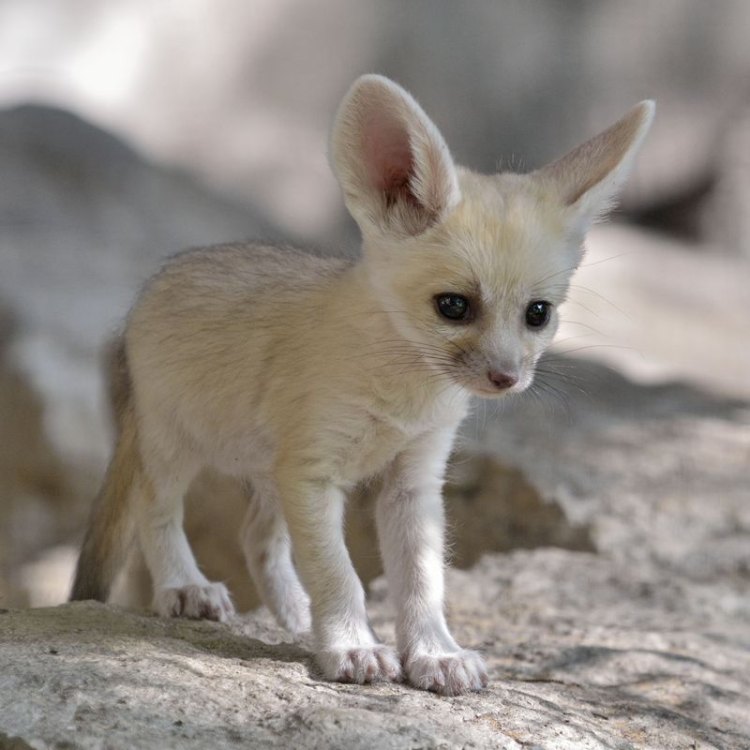
Fennec Fox
- Adult Size: Up to 9.5 inches tall at the shoulder
- Average Lifespan: Up to 14 years
- Reproduction: Sexual
- Reproductive Behavior: Polygamous
- Sound or Call: Barks, screams, and purrs
- Migration Pattern: Non-migratory
- Social Groups: Solitary or in small family groups
- Behavior: Nocturnal and burrows underground
- Threats: Habitat loss, illegal pet trade, and hunting
- Conservation Status: Least Concern
- Impact on Ecosystem: Pollination of desert plants
- Human Use: Kept as pets and used in the fur trade
- Distinctive Features: Large ears and long bushy tail
- Interesting Facts: They have adapted to desert life by having large ears to dissipate heat and fur on their feet to protect against hot sand
- Predator: Large birds of prey, jackals, and other desert mammals
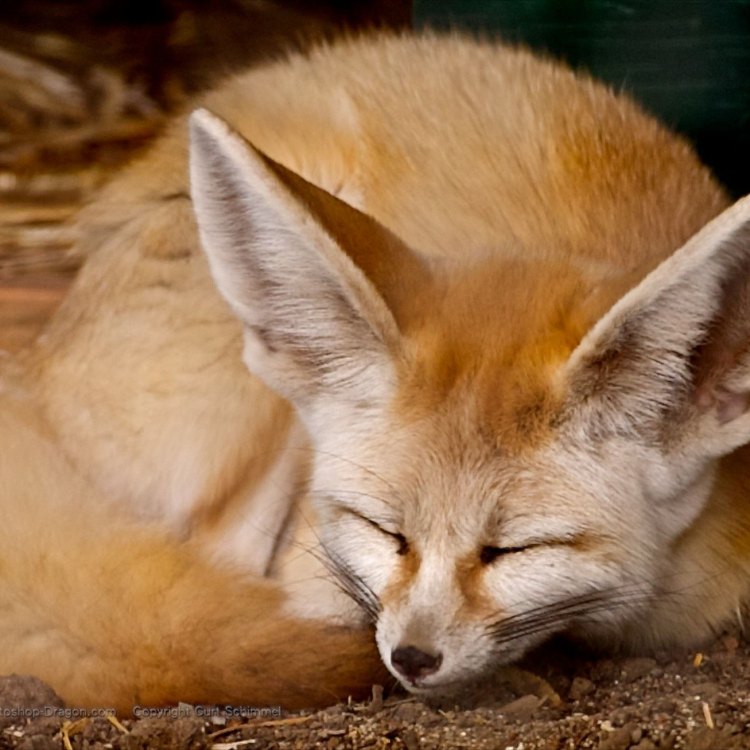
Vulpes zerda
The Unique Fennec Fox: A Desert Dwelling Beauty
In the vast and unforgiving landscapes of the Sahara desert, one unique and fascinating creature has adapted to thrive in the extreme conditions - the Fennec Fox. With its distinctive features and remarkable behavior, the Fennec Fox has captured the hearts and piqued the curiosity of many, but there is a lot more to these adorable creatures than meets the eye.Standing at a mere 9.5 inches tall at the shoulder, the Fennec Fox may seem small, but do not underestimate its power and resilience PeaceOfAnimals.Com. These adorable animals have an average lifespan of up to 14 years and are surprisingly adept at surviving in the harsh desert environment.
Originating from North Africa, these small foxes have become a popular attraction in zoos and are kept as pets by some. However, their unique features and behavior make them much more than just a cuddly companion.
Reproduction and Social Behavior
Like most mammals, Fennec Foxes reproduce sexually, with a breeding season that typically occurs during the cooler months of December through March. During this time, these typically solitary creatures come together in small family groups to mate.Interestingly, Fennec Foxes are polygamous, with one male mating with several females within their group. After a gestation period of around 50 days, the female gives birth to 2-5 pups, which are born blind and helpless. The female stays in the den to care for her young while the male brings back food for the family. After about 12 weeks, the pups are weaned, and they leave the den to start their own lives Frizzle Chicken.
Nocturnal Habits and Unique Sounds
Fennec Foxes are primarily nocturnal, meaning they are most active at night. This behavior allows them to avoid the scorching heat of the desert during the day. They are also skilled diggers and make extensive burrows, sometimes reaching up to 120 feet in length. These burrows provide shelter and allow them to regulate their body temperature, especially during the hot summer months.As for their vocalizations, Fennec Foxes are known to make a variety of sounds, including barks, screams, and purrs. These vocalizations serve different purposes, such as communication between family groups and a warning signal against predators.
Threats and Conservation Status
Like many exotic and unique animals, Fennec Foxes face numerous threats to their existence. The primary threat to these creatures is habitat loss due to human activities, such as urbanization and overgrazing of land. They are also victims of the illegal pet trade, where they are captured from the wild and sold as exotic pets.Additionally, Fennec Foxes are hunted for their fur, which is used in the garment industry. This practice is illegal, but the demand for luxurious fur coats continues to put these creatures at risk.
Despite these threats, the Fennec Fox is currently listed as Least Concern by the International Union for Conservation of Nature (IUCN). However, continuous efforts are being made to protect and conserve their population.
The Impact of Fennec Foxes on the Ecosystem
Although small in size, Fennec Foxes play a vital role in maintaining a healthy ecosystem. These creatures are known to be pollinators of desert plants, such as the Rhus plant, which is essential for the regeneration of indigenous plant species in the desert.By eating insects and small rodents, Fennec Foxes also help control their populations, preventing potential damage to crops and other vegetation in the desert. They also serve as prey for larger predators, such as large birds of prey, jackals, and other desert mammals, thus playing a crucial role in maintaining a balanced food chain.
Human Use and Interesting Facts
Unfortunately, the beauty and uniqueness of Fennec Foxes have also made them a target for human use. These animals are often kept as pets, despite being wild animals and not suitable for domestication. This practice not only goes against their natural behavior and needs but also contributes to their decline in the wild.In some parts of the world, Fennec Foxes are also used in the fur trade, where they are bred in captivity for their soft and plush fur. While this practice may seem harmless, it ultimately harms the population of these creatures, leading to a decline in their numbers.
Aside from these troubling human uses, Fennec Foxes have some remarkable adaptations and interesting features that have helped them thrive in the harsh desert environment. Their most distinctive feature is their large ears, which can grow up to six inches in length. These ears not only make them look incredibly cute but also serve to dissipate heat and keep them cool in the scorching desert sun.
Additionally, Fennec Foxes have dense fur on their feet, acting as natural insulation against hot sand and protecting them from burning their sensitive paws.
In Conclusion
In conclusion, the Fennec Fox is a truly unique and remarkable creature that has adapted to survive in one of the harshest environments on Earth. Despite facing numerous threats, these animals continue to flourish, playing a crucial role in maintaining a healthy ecosystem and providing endless fascination and wonder to those who encounter them.However, it is our responsibility to protect and conserve their population, not only for their sake but for the sake of the entire desert ecosystem. By understanding and appreciating these beautiful creatures, we can work together towards their preservation and ensure that future generations can continue to marvel at the wonders of the Fennec Fox.
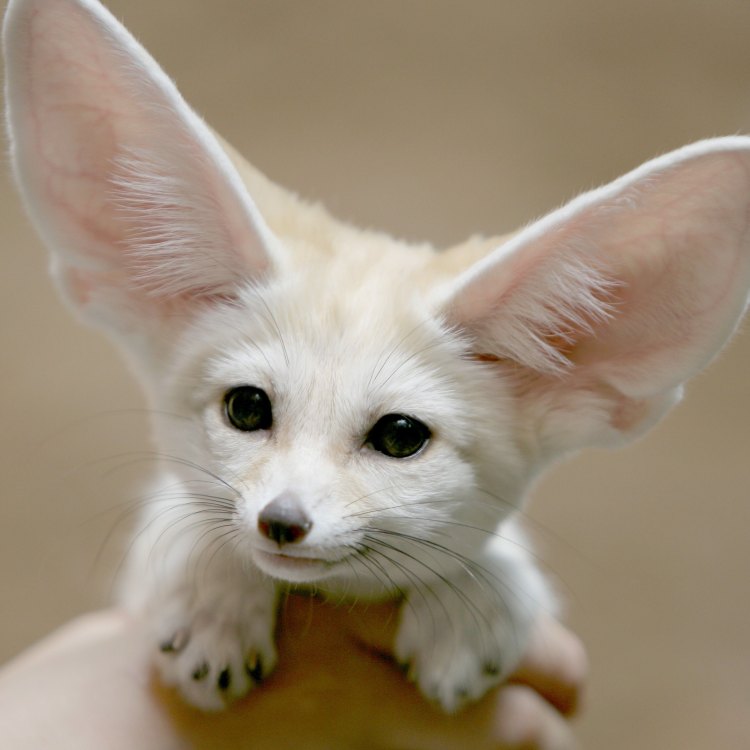
The Adorable Fennec Fox: A Desert Dweller with Unique Adaptations
Disclaimer: The content provided is for informational purposes only. We cannot guarantee the accuracy of the information on this page 100%. All information provided here may change without prior notice.

